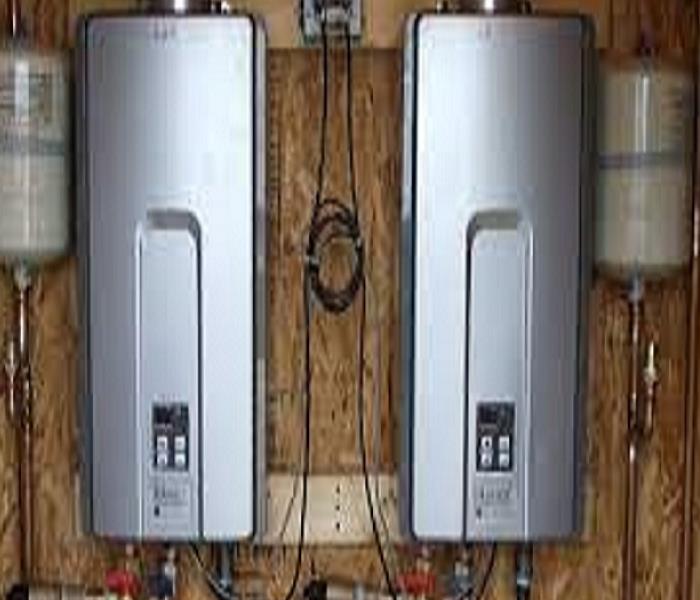Tankless Water Heaters vs Storage Tank Water Heaters
11/22/2021 (Permalink)
Tankless Water Heaters are becoming the favored replacement for a failed Storage Tank Water Heater, and for several good reasons. Tankless water heaters provide, on average, about 2-5 gals per minute of hot water, less than most storage tank water heaters. However, storage tank water heaters have a set storage capacity, unlike a tankless water heater.
Tankless water heaters take up much less space and can be easily placed on a wall, providing more overall storage room.
Both tankless and storage tank water heaters should be checked regularly for mineral build-up to prevent scaling, thereby impairing the water heater's function. A tankless water heater has a filter that can be cleaned/changed, providing for much less maintenance than a storage tank water heater that needs to be shut down and drained, possibly moving sediment and mineral build-up around, causing unforeseen issues until a problem occurs.
How does a tankless water heater work? As water travels through the Unit, it is heated by a gas burner or electric heating coil, heating the water instantly.
A typical storage tank water heater for a family of 5 is about 40-50 gallons. If the tank fails, and you aren't home to shut the water supply off, that's 40-50 gallons of water on your floor, not counting the fact that the water is still on, trying to fill the tank as it drains out its contents.
While a tankless water heater doesn't have a storage tank, the supply lines running through the tankless system can still fail, so proper, consistent maintenance is still required to help prevent failures.
While SERVPRO of Derry/Londonderry is not a plumbing service company, we see plenty of storage tank water heater failures and the damage caused by them. Tankless water heaters have their problems, but look to be the way of the future, more efficient, more capacity, albeit at a higher cost, and with a reduced failure rate.
How does a Tankless Water Heater work?

 24/7 Emergency Service
24/7 Emergency Service
